Exaltation & Debilitation – Astronomically – 1 by V.P. Jain, India
Article by V.P. Jain, India
As per Surya Sidhanta (SS) by Late Shri Mahabir Prasad Srivastava, the exaltation of planets takes place when they are at maximum distance from the Earth and debilitation is at 180 degrees opposite to them. SS is considered to be the base of Indian Astrology for astronomical calculations. (Reference SS pages 21 to 34). Before proceeding further we have some definitions and various motions of the Earth.
Some Definitions
Aphelion is the farthest point of the orbit of the planet from the Sun.
Perihelion is the nearest point of the orbit from the Sun
Apogee is the farthest point of the orbit from the Earth.
Perigee is the nearest point of the orbit from the Earth.
Line of Apsides is the line joining the Aphelion and Perihelion of the orbit. It is also called Apse Line.
Geocentric longitudes are used in Astrology and these are the longitudes of a place in the ecliptic where the planets are seen by an observer as if he is at the centre of the Earth.
There are Several Types of Motions of the Planets and the Earth
We shall discuss only four of them.
(1) Planets rotate on their axis by which days and nights are formed. It is called the diurnal motion of the planets and the Earth.
(2) Planets including the earth are revolving around the Sun in elliptical orbits and the Sun is at one of its focus. One revolution is the year of the planet.
(3) The Earth has a slow wobbling motion; such that the celestial pole describes a small circle of diameter about 47 degrees nearly around the pole of ecliptic. This causes precession of equinox and formation of Aynamsa.
(4) The above three motions of the Earth and the planets are commonly known to the astrologers but the fourth one is rarely known which is:
Slow Motion of the Apse line (the line of Apsides)
By observing the position of the apse line of the orbit of the planets for a number of years, it has been found that it has a slow direct motion in the plane of ecliptic. In the case of Earth it is at the rate of 11.25”each year or one revolution is completed in 1 lac and fifteen thousands years (one hundred and fifteen thousand years). It is given on page 109 of ‘Elements of astronomy’ by George W Parker.
It is explained by a figure given below:

A B is the position of the apse line at any time and A1 B1 is the position of the apse line after‘t’ years.
Here A and A1 are perihelion (can be said that the Sun is at perigee). B and B1 are aphelion (can be called apogee also). When the Sun is at A, the Sun is seen at Q on the ecliptic, its longitudes are the longitudes of Q while at B its longitudes are that of P. At A1and B1 the longitudes of the Sun are those of Q1and P1. In ‘t’ years the apse line has moved 11.25 x t longitudes. The longitudes of perihelion have increased by 11.25 x t’
The orbits of planets are revolving with a motion, resulting in slow motion of the perihelion and aphelion of their orbits.
Shlokas of S.S.Madhyamadhikara (29 to 33) are given below


These state the revolution of planets and their Shigra (perihelion) in 432,20,000 years
Annual motion of aphelion and perihelion (Mandochha and Shighrochha) as per SS at pages 33-34 are as under;
Name As per Modern Astronomy As per SS Of planet from Nirayana Aries
Sun +11.25″ +0.1161″
Mars +15.46″ +0.0612″
Mercury +5.85″ + 0.1104″
Jupiter +6.65″ + 0.27″
Venus -3.24″ + 0.1605″
Saturn +19.31″ +0.0117″
The difference between these observations is due to the fact that the SS observations were taken by naked eye and crude instruments, while the modern ones were observed by telescopes and precise instruments.
As the Moon is revolving around the Earth its apse line is also revolving. The apse line (line joining perigee and apogee of its orbit) completes one revolution in 3232.6 days (8.85 years as per Lahiri’s Ephemeris 2009page 15). As per SS it completes one revolution in 3232 Savana days 5 ghattis 37 pala and 13.6 vipal. In one year it moves by one sign, 10 degrees and 40.7 minutes.
In olden days it was thought that all the planets are revolving around Earth but now it has been established by modern astronomy that they are revolving around the Sun in elliptical orbits. So the SS is taking apogee (mandochha). When a planet is at mandochha it was said to be exalted and at 180 degree opposite to it at perigee it was considered as debilitated. In Shadbala the Shighrochha (perigee) is taken when it is near the Sun at that time, this however does not agree with period of exaltation of planets. As per classical texts the period of reaching their Shighrochha will be every year. It does not agree with SS pages 29 to 33. This way Mercury and Venus will come to mandochha more than once during a year as their sidereal periods are 88 days and 225 days, but Mars, Jupiter and Saturn will be farthest from the Earth in one year. During that year such exaltation and debilitation points are used.
Here it is essential to mention that according to Kepler’s 2nd law the line joining the planet and the Sun covers equal area in equal interval of time and the Sun is at one of the focus of its orbit. It is deduced that when the planet is at perihelion its angular motion will be faster and slower at aphelion.
In case we consider that the mandochha (exaltation point) is aphelion it will be come back to this point after one sidereal period which is true for Saturn and Jupiter.
In case of Sun and Moon apogee is mandochha. Now a days Sun is at apogee or the Earth is at perihelion around 4th of July when its Nirayana longitudes are nearly 77 degrees or 17 degrees in Gemini and the Moon’s apogee changes 40 degrees and 40.7 minutes every year and it is at apogee when its motion is least.
Shri Kedar Dutt Joshi, former Professor of Mathematics and Predictive astrology of Kashi Hindu Vishwavidyalaya (University) has stated in the preface of Tajik Neelkanthi on page 57 that the planets are exalted at mandochha. He has also stated that by not adopting the correct longitudes of exaltation and debilitation points predictions fail many times. These points used are the same which were in vogue in Varahmihir’s times and many renowned astrologers like Sri Pati, Narain Bhatt, Keshwark, Ram Daivagya etc., were not having good knowledge of mathematics (I think it includes astronomy too) and adopted the old exaltation points.
Shri Joshi has given a horoscope of Shrim Ram Chander ji, which is given at page 199 of his book ‘Jyotish Mein Swar Vigyan ka Mahatva’. It was quoted in the Mangal Prakaran of horoscopes of the natives.

It states that Sri Ram was born in Chaitra Shukla (bright half) Navami Tithi (ninth lunar day) Punarvasu Nakshatra, Cancer ascendant, Jupiter conjunct with Moon and five planets exalted.

Punarvasu ends at 3degee 20minutes in Cancer. So it was maximum away by 93 degrees 20 minutes from the first point of Aries. In case the Sun was at 0 degree Aries the Tithi comes 93 degrees 20 minutes divided by 12 resulting in 7 as quotient and 9 degrees 20 minutes as remainder. The Tithi will be eighth and not ninth. The ninth is only possible in case the Sun was in Pisces.
Five planets were exalted:
Moon is in its own sign and cannot be exalted as per classics. Only one out of Mercury and Venus can be exalted. Four planets Mars, Venus, Jupiter and Saturn are exalted. Hence the left over Sun should be exalted as fifth planet. It was in Pisces. Regarding Rahu and Ketu classics differ for their exaltation points. Hence Sun used to be exalted in Pisces during those days.
In my opinion the mandochha i.e. exaltation points of Mercury, Venus, Mars, Jupiter and Saturn should be when they are at aphelion and not at perigee. While those of Sun and Moon should be apogee as for Moon’s aphelion is irrelevant and for Sun it is at apogee when the earth is at aphelion.
There are many things in astrology which require change in the light of modern astronomy for which research by those, well versed in both astronomy and astrology should be conducted. In my opinion astrology is applied astronomy but we do not normally use astronomy except for the preparation of horoscopes.
About Author: V. P. Jain was born in Rewari on 31st Aug 1931. He obtained Masters Degree in Mathematics with Astronomy as one of its papers. He retired as Audit Officer from the office of the Director General of Audit Central Revenues and has thereby written several books in astrology titled ‘Elements of Astronomy & Astrological Calculations’, Text Book for Shadbala & Bhavabala’ which received enormous praise from readers & ‘Astronomy relevant to Astrology’. Many of his research papers have been published in various astrological publications.




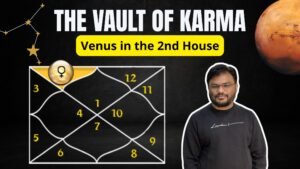
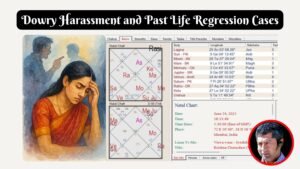


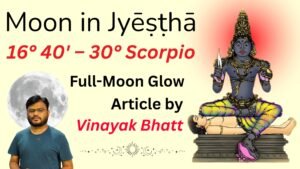

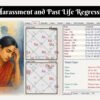

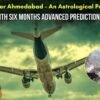
Leave a reply
You must be logged in to post a comment.